- Details
- Written by Mike Marsh
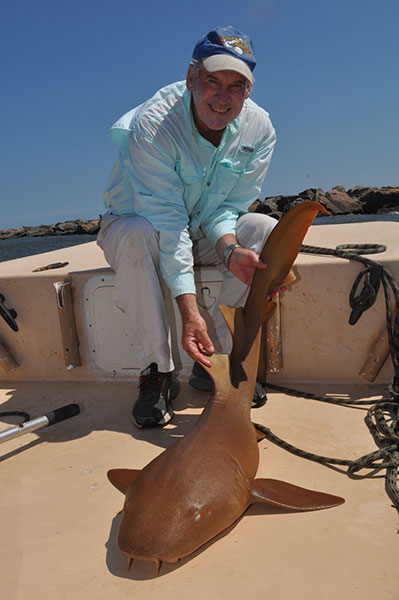
Mike Marsh caught this nurse shark during Shark Week.
The latest deluge found us searching for some clear water. The crashing water temperatures from the cold rain and the turbidity from the runoff had the inshore fish a bit out-of-sorts. While we tried several places, I eventually, took my wife, Carol, fishing at Masonboro Inlet, where we were looking for the tide line.
The contrast of the brick-colored water dumping into the Atlantic from the Intracoastal Waterway with the cleaner ocean water was stark. Despite it being a Sunday afternoon, only a few other anglers were fishing.
"The fish must not be biting, or the inlet would be crowded," Carol said. "At least the fishing is comfortable."
Indeed, a southwest wind was blowing hard. Anchoring the 20-foot flat bottom boat in lee of the south jetty had been a good idea.
Read more: Nurse Shark is a Great Catch to Celebrate Shark Week
- Details
- Written by Mike Marsh
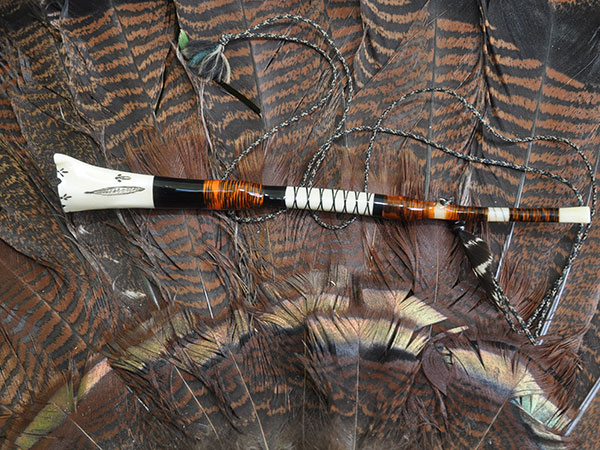
This Birdman Wingbone call was made by Jay Burnworth of Dola, Ohio.
Does a problem gobbler have you stumped? A wingbone call can bring him strutting into shotgun range when nothing else will because it makes turkey sounds he has not heard before.
Wingbone calls may be the oldest manmade turkey calls. Perhaps the Native Americans showed Pilgrims how to blow across leaves held between their thumbs to imitate turkey yelps, but we will never know because leaves do not survive antiquity.
Jay Burnworth of Dola, Ohio has taken the telescoping of a humerus, ulna and radius in a wing to the level of a modern art form. Now 77, he began hunting turkeys in 1980.
"I hunt six or seven states a year," he said. "I made my first wingbone in the early 1990s. I read that wingbones have been found in Pueblo Indian ruins, so there must be a good reason."
He made his first one from a wing he brought home after a hut in Southern Ohio. Now, he makes 100 Birdman Wingbones annually with bones from all over the U.S.
Read more: Using a Wingbone May Solve Your Problem Gobbler Situation
- Details
- Written by Mike Marsh
*Click the small images for a larger view*
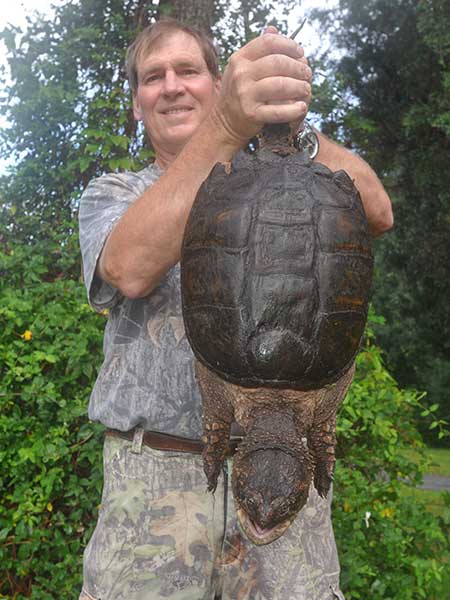 When I was a student at Wayne Community College in Goldsboro, I lived on what I could catch from the Neuse and Little rivers. Catfish was a mainstay of my diet. Occasionally, I was fortunate enough to catch a snapping turtle.
When I was a student at Wayne Community College in Goldsboro, I lived on what I could catch from the Neuse and Little rivers. Catfish was a mainstay of my diet. Occasionally, I was fortunate enough to catch a snapping turtle.
In the years since, I have caught snapping turtles on purpose or incidentally to hunting and fishing for other species. Sometimes I eat them, but most of the time I let them go. Last week I was near a creek in Pender County when I saw what appeared to be a half-rotten stump. As I passed it, the dark brown object moved. Turns out, it was a snapping turtle of around 12 pounds.
A snapping turtle strikes with the speed of a cottonmouth. Anything clamped in its sharp-edged jaws gets cut off. As I circled the turtle, it turned to face me. However, I outmaneuvered it, grabbed it by the tail and flipped it into the pickup bed.
- Details
- Written by Mike Marsh
*Click the small images for a larger view*
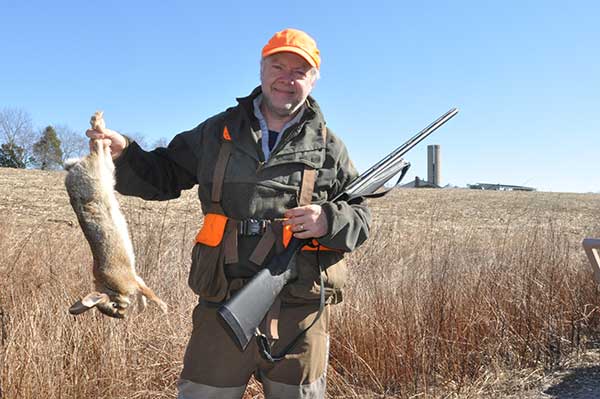 I recently enjoyed a rabbit hunt at Willow Oaks Plantation in Eden, North Carolina. Famous North Carolina writer, Eddie Nickens will henceforth be known in my mind's eye as Deadeye Eddie after making a remarkable shot at a streaking cottontail. The beagles had chased the cottontail from a brier patch to a gravel road. The bounding bunny saw the error of its ways and tried to duck back into the thicket, just before Eddie called a halt to its progress with a load of No. 7 1/2 shot fired from a 12-gauge Remington Versa Max Sportsman. The Sportsman version was a perfect for rabbit hunting because it is a Spartan, no-frills, lower priced version of the original, without the fancy frills like the rubber pads at the gripping points of stock and forearm. Obviously, in the hands of a pro like Eddie, it gets the job done.
I recently enjoyed a rabbit hunt at Willow Oaks Plantation in Eden, North Carolina. Famous North Carolina writer, Eddie Nickens will henceforth be known in my mind's eye as Deadeye Eddie after making a remarkable shot at a streaking cottontail. The beagles had chased the cottontail from a brier patch to a gravel road. The bounding bunny saw the error of its ways and tried to duck back into the thicket, just before Eddie called a halt to its progress with a load of No. 7 1/2 shot fired from a 12-gauge Remington Versa Max Sportsman. The Sportsman version was a perfect for rabbit hunting because it is a Spartan, no-frills, lower priced version of the original, without the fancy frills like the rubber pads at the gripping points of stock and forearm. Obviously, in the hands of a pro like Eddie, it gets the job done.
Deadeye Eddie hoisted the rabbit high in one hand and the Versa Max in the other while I clapped my hands, waved and shouted. But I wasn't complimenting him on the great shot. I was trying to get his attention so he would turn around to see the rabbit the dogs were actually running cross the road in full flight with five beagles tight on his heels. The rabbit in his hands had just been sneaking away from all the commotion, hoping to escape, unnoticed and unscathed.
There was Eddie, standing in a perfect X position, with the action taking place behind him where he could not see it. But I could the chase right through his legs. While I wasn't able to capture a photo or, better yet, a video for posterity, the scene will be etched forever in my memory. Such events are ingredients in the recipes for the greatest hunts of our lives. Simply add good friends, great dogs, fantastic food, comfortable lodging, compliments over the hits, and condolences for the misses. Stir well, serve and enjoy.
To contact Mike or order his books, Fishing North Carolina, Inshore Angler, Offshore Angler, click here.
- Details
- Written by Mike Marsh
*Click the small images for a larger view*
 Since dawn's first light, I had been watching a couple of yearling deer running around a field and crossing back and forth over the road that entered it. My field of vision was about 270 yards along the field road, which is a very long shot for a muzzleloading rifle. However, I figured I could cover most of that distance with the rifle in my hands.
Since dawn's first light, I had been watching a couple of yearling deer running around a field and crossing back and forth over the road that entered it. My field of vision was about 270 yards along the field road, which is a very long shot for a muzzleloading rifle. However, I figured I could cover most of that distance with the rifle in my hands.
The Savage 110 MLS was invented by a Greensboro gunsmith named Henry Ball. The rifle is the only muzzleloader that is approved by SAAMI, the Sporting Arms and Ammunition Manufacturers Institute, for use with smokeless, nitrocellulose-based powder. That is the same type of powder used in modern rifles and shotguns. Some states require black powder or black powder substitutes for use during special muzzleloading firearms seasons, but North Carolina does not. Of course, the Savage can be loaded with those corrosive propellents for use in other states or if the shooter desires. Some states also require flintlock actions and do not allow scope sights. But here, anything goes.
- Details
- Written by Mike Marsh
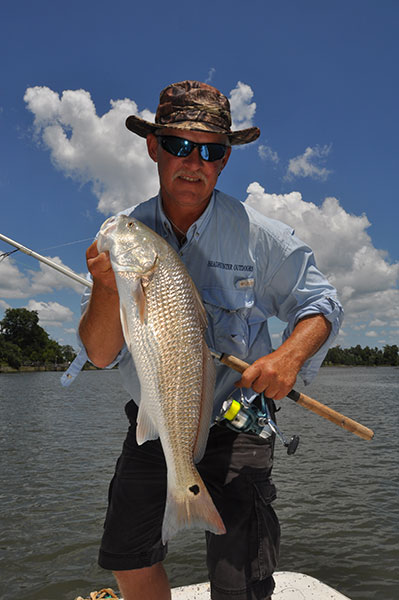 Capt. David Baxley of Headhunter Outdoors with a red drum caught at Surf City. Baxley finds baitfish in the local creeks, using a cast net to fill his live well with menhaden and mullet.
Capt. David Baxley of Headhunter Outdoors with a red drum caught at Surf City. Baxley finds baitfish in the local creeks, using a cast net to fill his live well with menhaden and mullet.
His favorite way to fish is by casting a Carolina rig with one of these baitfish on the hook to deep holes in the tidal creeks or under the boat docks in the Intracoastal Waterway. The Surf City area has two excellent ramps, including the new ramp on Lewis Road, which was recently opened by the N.C. Wildlife Commission. The other is the City Ramp across the bridge on the right when entering the island on N.C. 210.
Red drum action will be excellent throughout the entire fall. Contact Capts. David and Tammy Baxley at 910-329-0818.
- Details
- Written by Mike Marsh
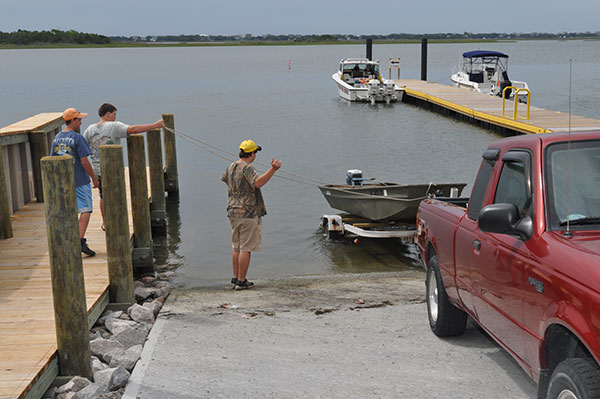 The N.C. Wildlife Resources Commission Hampstead Boating Access Area is now open to the public. It opens boating opportunities for an area that had limited ramps and parking spaces for vehicles with boat trailers.
The N.C. Wildlife Resources Commission Hampstead Boating Access Area is now open to the public. It opens boating opportunities for an area that had limited ramps and parking spaces for vehicles with boat trailers.
The new ramp is now available for adoption. A partnership with the North Carolina Public Access Foundation, Inc. and the NCWRC called the Adopt-A-Boat-Ramp program works the same as the NCDOT's Adopt-A-Highway program does, with litter clean-up by those adopting a ramp freeing up WRC Boating Technicians for more important work in upgrading ramps and other duties. As much as 90 percent of their work is maintaining ramps, which is mostly picking up trash.
Citizens, groups and businesses have now adopted 13 boating access areas. While all, except these 13 are available for adoption, some of the sites the WRC would like to be adopted are listed on the NCPAF, Inc. website. For more information, visit www.ncpaf.com.
Copyright Notice
Any use of images and/or content of this website without a license agreement issued by Michael S. Marsh is strictly prohibited.
